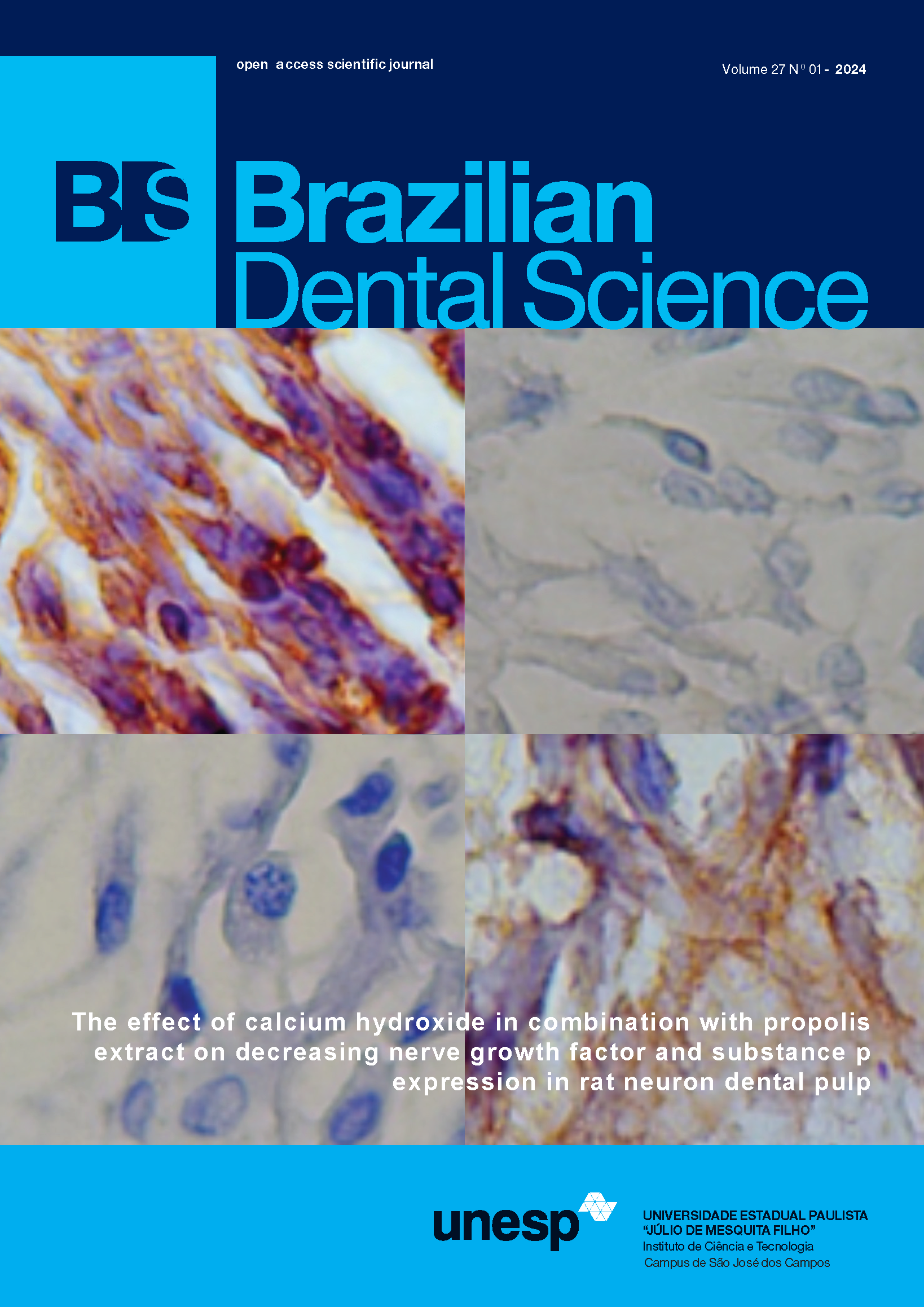Therapeutic potential of sulforaphane: modulation of NRF2-mediated PI3/AKT/mTOR pathway in oral fibrosis
DOI:
https://doi.org/10.4322/bds.2024.e4172Resumo
Oral Submucous Fibrosis is a potentially malignant disorder caused by habitual areca nut chewing, which contributes to the dispersion of active alkaloids into subepithelial tissues, stimulating excessive extracellular matrix deposition. Various treatment modalities are available; however, their efficacy in inhibiting fibrosis progression remains limited. Sulforaphane (SFN), an isothiocyanate found abundantly in cruciferous plants, is known to have effective antifibrotic properties. Objective: The present study investigated the antifibrotic effect of SFN via phosphatidylinositol 3 kinase (PI3K), Serine/Threonine Kinase 1 (AKT-1), mammalian target of rapamycin (mTOR) pathway in arecoline (AER) induced fibrosis in human gingival fibroblasts [HGFs]. Material and Methods: MTT assay determined the half-maximal inhibitory concentration of AER and SFN at 24h in the HGF cell line. Expression levels of transforming growth factor B1 (TGFB1), collagen type 1 alpha 2 (COL1A2), hydroxyproline (HYP), PI3, AKT, mTOR, and nuclear factor erythroid 2–related factor 2 (NRF2) were assessed post-AER and SFN treatment using qPCR and western blot analysis. Results: The findings of the study revealed that AER elicited a stimulatory effect, upregulating TGFB1, COL1A2, HYP, PI3K, AKT, and mTOR and downregulating NRF2 expression. Conversely, SFN treatment significantly upregulated NRF2, inhibiting TGFB1 mediated PI3/ AKT/mTOR pathway. Conclusion: These observations suggest that SFN can be used as a promising synergistic antifibrotic agent to combat fibrogenesis via the non-Smad pathway.
KEYWORDS
Arecoline; NRF2; Oral submucous fibrosis; PI3/AKT/mTOR; Sulforaphane.
Downloads
Downloads
Publicado
Como Citar
Edição
Seção
Licença
TRANSFERÊNCIA DE DIREITOS AUTORAIS E DECLARAÇÃO DE RESPONSABILIDADE
Toda a propriedade de direitos autorais do artigo "____________________________________________________________________" é transferido do autor(es) para a CIÊNCIA ODONTOLÓGICA BRASILEIRA, no caso do trabalho ser publicado. O artigo não foi publicado em outro lugar e não foi submetido simultaneamente para publicação em outra revista.
Vimos por meio deste, atestar que trabalho é original e não apresenta dados manipulados, fraude ou plágio. Fizemos contribuição científica significativa para o estudo e estamos cientes dos dados apresentados e de acordo com a versão final do artigo. Assumimos total responsabilidade pelos aspectos éticos do estudo.
Este texto deve ser impresso e assinado por todos os autores. A versão digitalizada deverá ser apresentada como arquivo suplementar durante o processo de submissão.




























